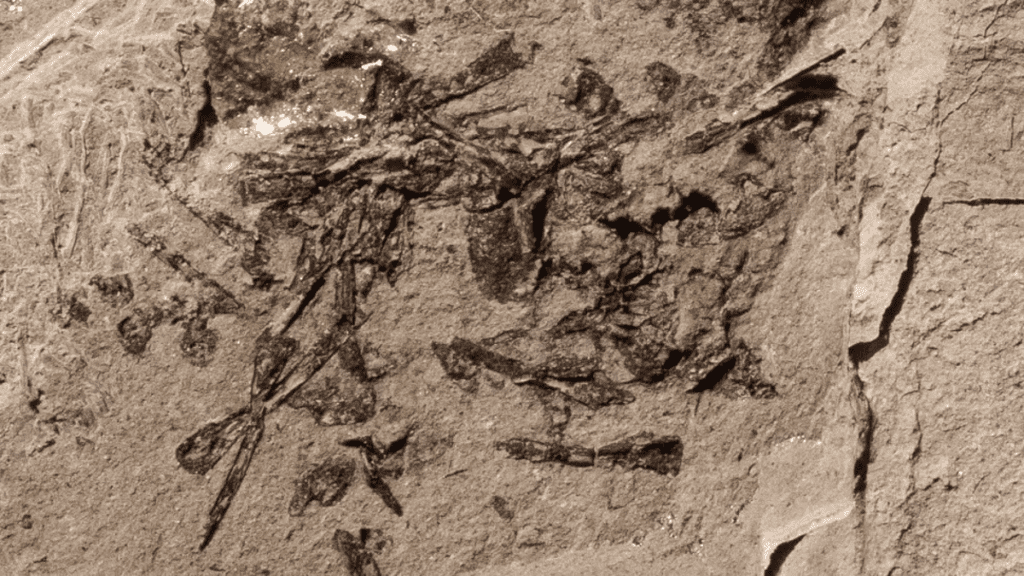Paleontologists in Utah have found a fossilized pile of vomit that dates back an astonishing 150 million years, offering a rare glimpse of a meal that just wouldn’t stay down. The retch contains assorted amphibian bones, including a salamander and a frog, that were eaten by a small predator, likely a fish or a semi-aquatic mammal.

Back in 2018, researchers found the remains of an animal’s stomach content during an excavation in the Morrison Formation — a set of sedimentary rocks filled with fossils dating to the late Jurassic period (164 to 145 million years ago). A specific section of the Morrison Formation contains fossilized remains of plants and other organic matter.
“What struck us was this small concentration of animal bones in a relatively tiny area,” lead author John Foster, a curator with the Utah Field House of Natural History State Park Museum in Vernal, told Live Science. “Normally there are no animal remains at this site, only plants, and the bones we did find weren’t spread out amongst the rock.”
A big barf
At first, the researchers didn’t know they had stumbled upon prehistoric vomit. Instead, they believed they had found the bones of an animal, until a closer look revealed what they had actually uncovered. They looked closer and saw most of the fossils were from a frog and a salamander. “What we were seeing was puked out of a predator,” Forster explained.
Altogether, they found a dozen bone fragments clustered together, along with a mix of fossilized soft tissues. The culprit behind the vomit is likely a bowfin fish, a type of ray-finned fish with a long body and sharp teeth that’s still around today. Its ancient lineage goes back 200 million years, with fossils previously found at the formation.
Fossilized bones can tell scientists a lot about extinct animals that lived millions of years ago, but vomit opens a rare window into the stomach of ancient creatures. This preserved puke is part of a class of fossils from the digestive system known as bromalites, which can provide insights into the extinct species and their wider ecosystems.
This is the case of the bowfin fish, for example, living in the aquatic landscape that once covered this part of Utah. Some modern fish throw up their food when chased by a predator, so the researchers believe it’s possible this fish lost its lunch while trying to avoid becoming someone else’s lunch. However, they said more research is needed.
“We think that there’s more to this thing than just the tiny bones of amphibians,” Foster said. “By doing a chemical analysis, we can begin to rule things out and determine what exactly the soft tissues are made up of.”
The study was published in the journal Palaios.






